COLORS
People often bring up the subject of “Color Psychology” to me. I don’t believe there is anything like a set of rules that if you’re “this”, you have to use “that color”. But there is some validity to what branding guru John Williams compiled many years ago, so for your dining and dancing pleasure, have a look:
BLUE: Cool blue is perceived as trustworthy, dependable, fiscally responsible and secure. Strongly associated with the sky and sea, blue is serene and universally well-liked. Blue is an especially popular color with financial institutions, as its message of stability inspires trust.
RED: Red activates your pituitary gland, increasing your heart rate and causing you to breathe more rapidly. This visceral response makes red aggressive, energetic, provocative and attention-grabbing. Count on red to evoke a passionate response, albeit not always a favorable one. For example, red can represent danger or indebtedness.
GREEN: In general, green connotes health, freshness and serenity. However, green’s meaning varies with its many shades. Deeper greens are associated with wealth or prestige, while light greens are calming.
YELLOW: In every society, yellow is associated with the sun. Thus, it communicates optimism, positivism, light and warmth. Certain shades seem to motivate and stimulate creative thought and energy. The eye sees bright yellows before any other color, making them great for point-of-purchase displays.
PURPLE: Purple is a color favored by creative types. With its blend of passionate red and tranquil blue, it evokes mystery, sophistication, spirituality and royalty. Lavender evokes nostalgia and sentimentality.
MORE TO COME
Our next article will cover more colors and concentrate on the extremely important use of white and black on a web page.
Interested in finding out how you can use branding to reach more people and become more successful? Email us at hello@21thirteen.com or call us at 646 808 0249 to find out more.






